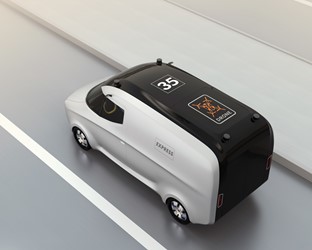Retailers Will Want To Ride Along With Self-Driving Vehicles
By Gary Goralnick, shopinride

An autonomous vehicle is not something a consumer can purchase at the local car lot, yet. But that day is coming. Already in some parts of the country public transit services are using autonomous vehicles as shuttles between parking garages and local retail and restaurant hubs. Waymo also has launched an early adopter test program allowing certain consumers to use its self-driving vehicles as a ride-share service of sorts. While there is still a driver in the Waymo vehicle for safety, this program illustrates the fact that consumers will and do want driverless vehicles to run them around town. This is a huge opportunity for retailers.
When consumers are sitting in a self-driving vehicle zipping along to their destination, they will have new free time on their hands. And their hands will be busy either browsing the web and social media on their smartphone or on a larger, more convenience in-vehicle screen. Retailers anticipating this trend will be able to target consumers with ads for products, services, food and beverage while they ride.
With the advent of self-driving vehicles, same-day and next-day shipping will lose some of the draw these services currently have on consumers’ purchasing decisions. Why wait a day when a local retailer can have the item ready for you in an hour and when you place your order your car is automatically programmed to take you there at the designated time? This is where e-commerce is headed when self-driving vehicles take over the roads.
Already, consumers are illustrating their desire for easy local pickup. Digital grocery shopping platforms that allow consumers to place an order online, pull up to the store and have it loaded into their vehicle are now being offered by many major grocery chains. CommonSense Robotics said in a report that at the end of 2018 curbside pickup was available in 45 percent of Walmart stores, 58 percent of Kroger stores, 56 percent of Target stores (up from 0.6 percent at the beginning of the year), 30 percent of Ahold Delhaize stores, and 21.7 percent of Albertsons stores. And, according to data from Doddle, 68 percent of U.S. consumers have shopped using a buy online pickup in store option, with 50 percent of people saying they’ve decided what store to buy from based on local pickup availability.
Knowing that consumers prefer to buy local and are already being primed to shop in their vehicles, retailers need to be thinking about how they will execute advertisements on vehicle screens. Retailers who are ready when self-driving vehicles take to the roads en-masse will have an advantage over those who wait to see how the technology will play out.
For example, take a local outdoor sporting goods store. A mom or dad is driving the kids to school in the morning and the oldest son announces that he forgot he needs new basketball shoes for tryouts that afternoon. Quickly the parent pulls up a search engine and looks for a local shop that sells basketball shoes. The sporting goods store ad pops up that they are having a 20 percent off sale this week. Mom or dad clicks on the ad, finds the shoes the son wants and orders them in his size. During checkout, a pickup is scheduled for noon and the car is programmed to take the parent there after morning drop off and a few other errands are completed. The entire process is easy and simple, and even if the day gets really busy mom or dad doesn’t have to worry about remembering to pick up the shoes. In fact, a trip to the school could even be entered into the car and scheduled for 12:15 to make sure the son has his sneakers in time for tryouts.
This example of in-vehicle shopping could be replicated for any type of retailer and any type of buying decision. It could also be linked to a consumer’s browsing history and social media platforms, with pop-up ads for items that were added to a shopping cart appearing when the vehicle is a near store with that item in stock. If a consumer decides to make a purchase based on an ad on the screen the vehicle could again be programmed to drive to the pickup location at a scheduled time. For now, the wait is on for self-driving vehicles to take to the roads, which gives retailers times to get prepared. Early adopters of in-vehicle shopping will have an advantage over those who wait to see if the trend takes off, because based on current shopper habits, it will.
About The Author
Gary Goralnick, CEO of shopinride, always has had entrepreneurial vision. As a teen in the 80’s he came up with the idea for a retainer cleaner, Teen Clean Ortho-Retainer Cleaner, and sold it to Colgate-Palmolive. Gary has spent most of his career investing in commercial real estate and he owns several retail centers, which has given him unique insight into the struggles of brick and mortar retail in the digital shopping age. He holds two patents for shopinride linked to in-ride advertising and purchases in autonomous vehicles and believes that driverless technology will rejuvenate the retail industry.
